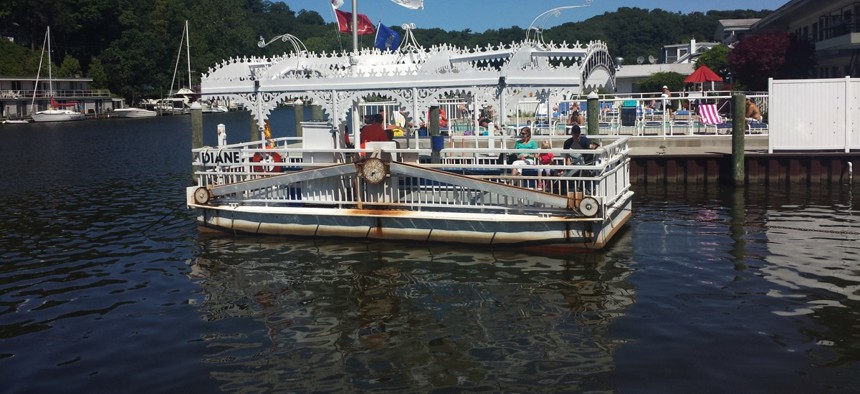Route Fifty City-County Roadtrip Recap: Saugatuck’s Hand-Crank Chain Ferry

The Saugatuck Chain Ferry Michael Grass / RouteFifty.com
This definitely requires some elbow grease.
Route Fifty is currently featuring dispatches from a city-county summer roadtrip in Maryland, West Virginia, Pennsylvania, Ohio, Michigan and elsewhere along the way. An Introduction to the Series | Previous Stop: Grand Rapids, Michigan
SAUGATUCK, Mich. — There are certain municipal jobs that require a lot of arm-muscle strength, like public works positions that require regular use of equipment, tools and machinery.
In the West Michigan village of Saugatuck, the municipal government operates what is said to be the only hand-cranked chain ferry left in the United States. Diane, which operates during the beach and boating community’s summer season, dates to 1838. (Michigan became a state in 1837.)

This ferry, naturally, takes elbow grease to operate. According to Michigan.gov:
The ferry in the resort town of Saugatuck, Michigan is claimed to be the only remaining chain driven ferry in the US. It has been in use since 1838. Three [pulleys] keep it in line as it is being pulled across the Kalamazoo River. This is an unusual operation to watch. When it is ready to cross the Kalamazoo River, the operator takes a can of compressed air and blows a very loud whistle (airhorn) alerting all boat traffic to stop. It is hand propelled! The operator turns a crank on the inside and this pulls the ferry along the chain.
It only costs just $1 to go across the Kalamazoo River from Saugatuck’s central business district to the other side, to Mount Baldhead and Oval Beach, which is regarded as one of the best beaches in the Great Lakes.

The dunes around here are quite impressive and they have a lot of history, too. Outside Saugatuck on the north side of the Kalamazoo River’s channel into Lake Michigan, are the remains of Singapore, a short-lived 19th century mill town that was consumed by the shifting sands of the Lake Michigan shoreline’s dunes. It was “an environmental disaster [that] resulted from the clear cutting of nearby forests and the blowing sands that eventually buried the town. It was, in short, an early American 'disaster city,'” according to this history of Singapore.

Next Stop: Kalamazoo, Michigan
Michael Grass is Executive Editor of Government Executive's Route Fifty.
NEXT STORY: Alabama Looks to Lottery for Budget Fix; Michigan Clears Its Rape-Kit Backlog as Minnesota’s Persists






